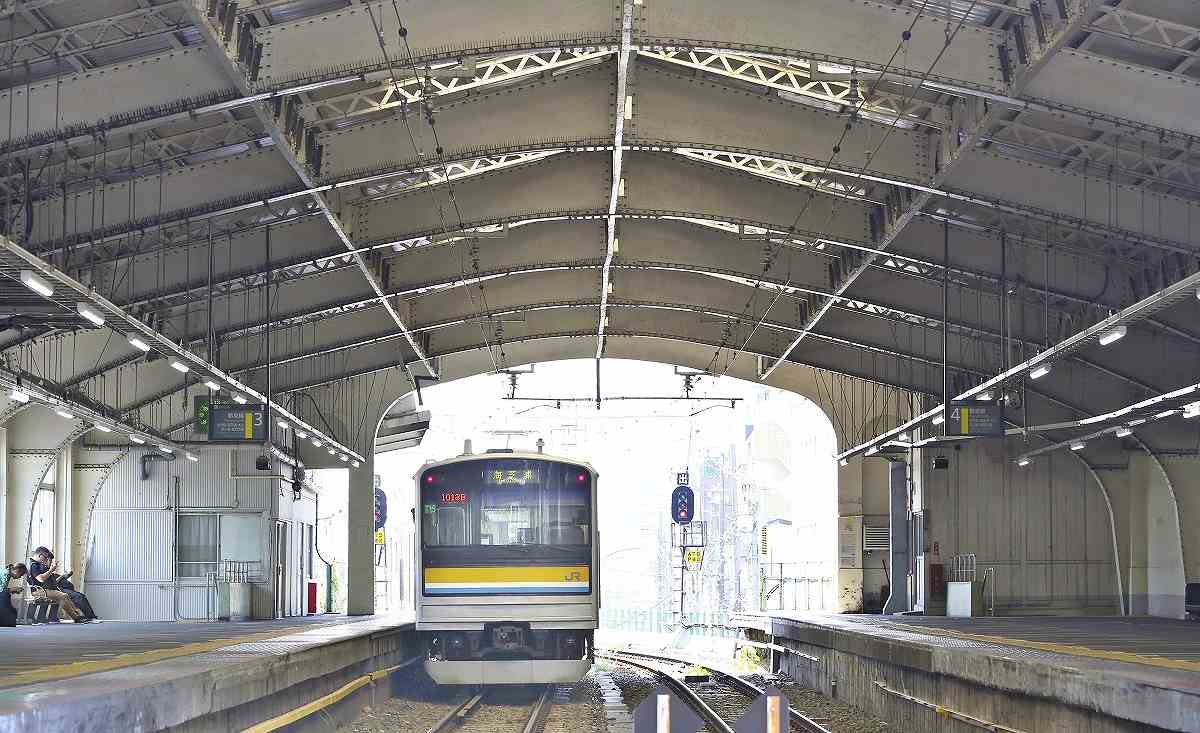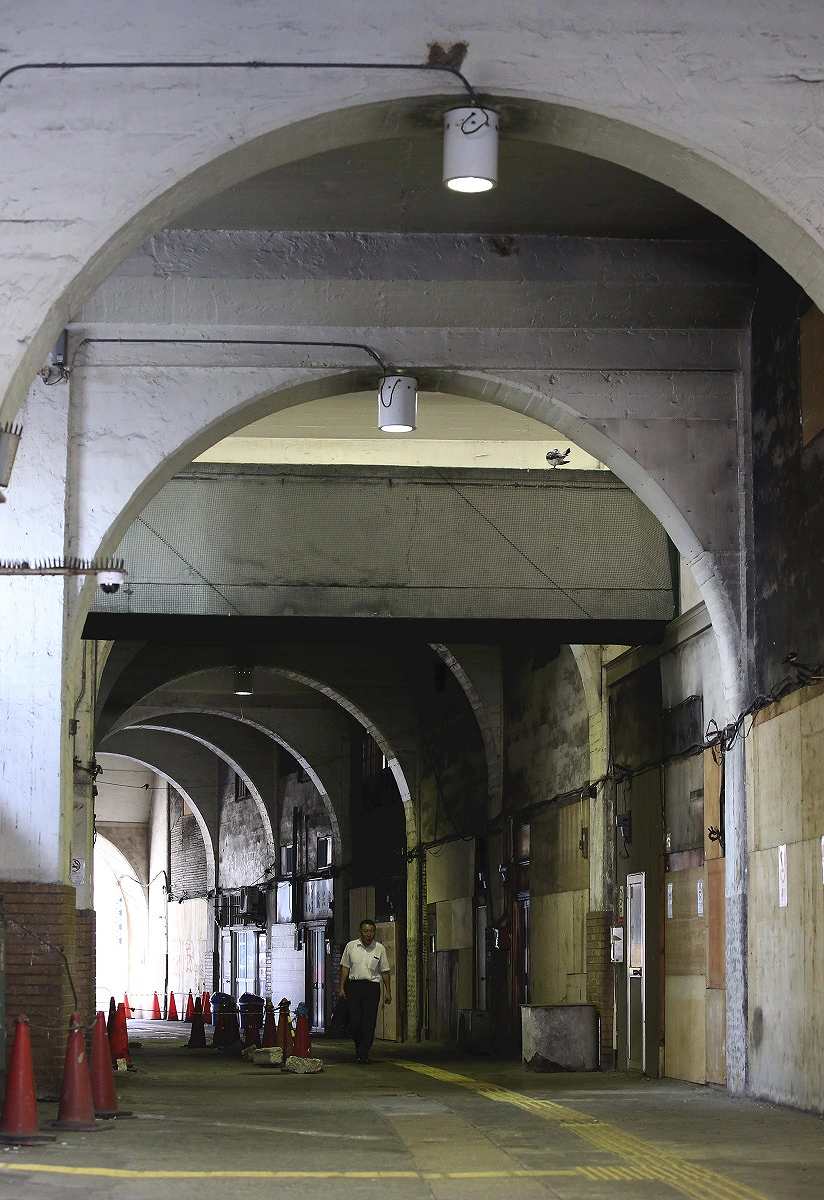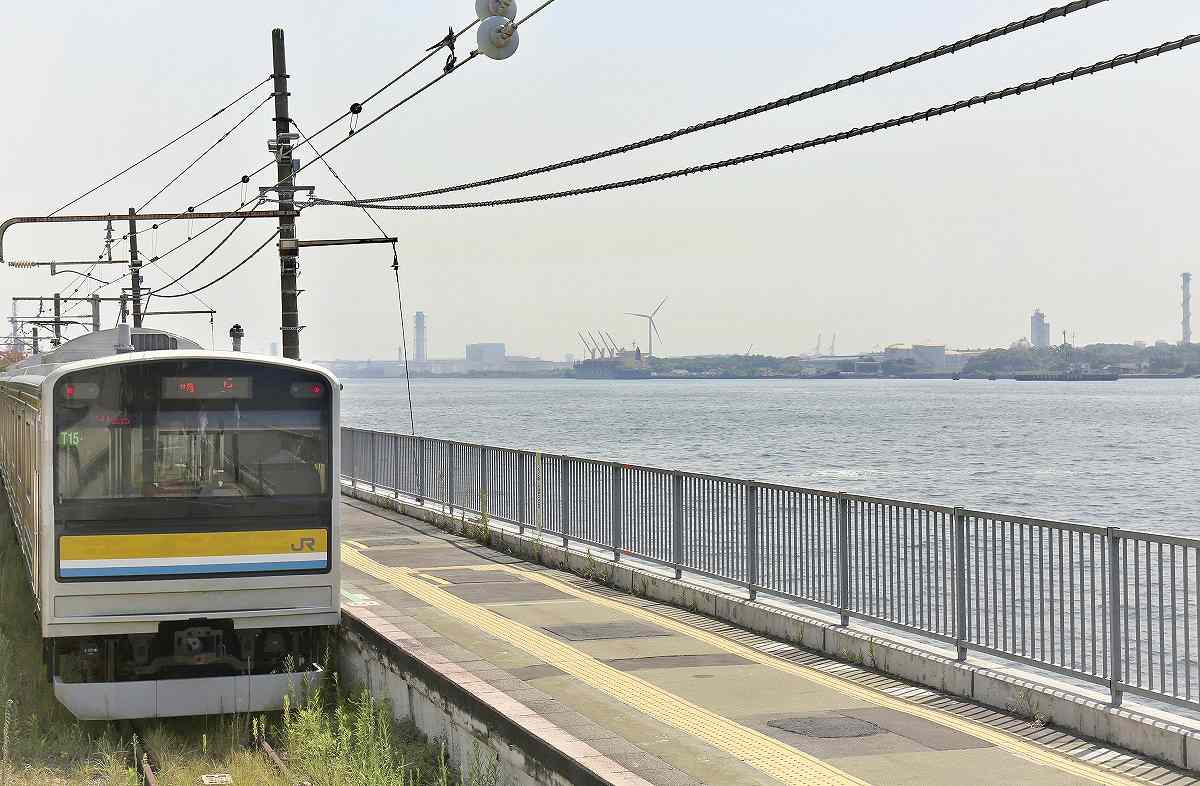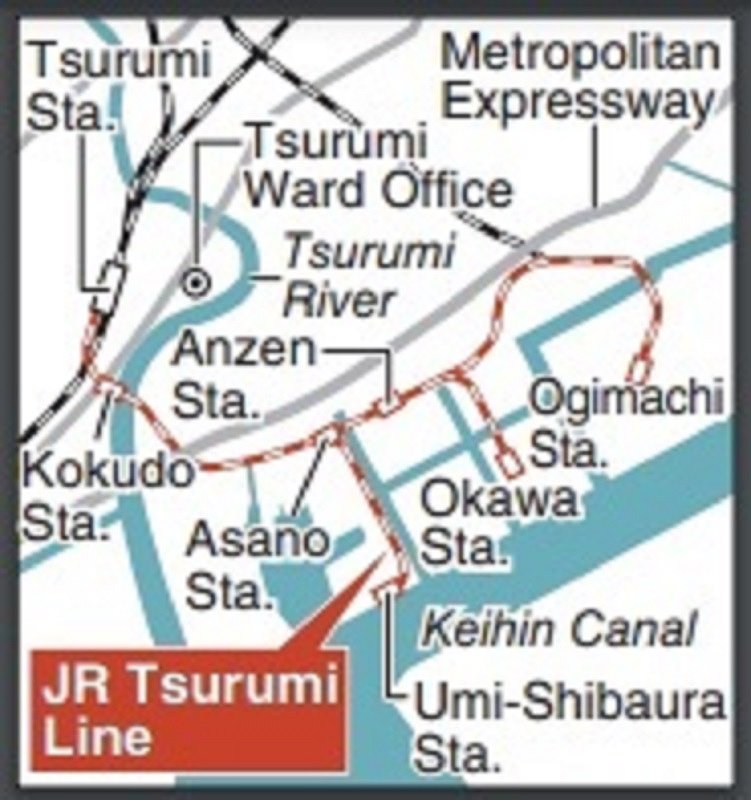
A train departs from Tsurumi Station for Umi-Shibaura Station in the Keihin industrial belt, a service that has run since the early years of the Showa era.
14:04 JST, September 11, 2023
As the sun sets, an industrial area becomes lit up by lights which are brightly reflected on the surface of the nearby water.
The area, known as the Keihin industrial belt, runs along the coast between Yokohama and Kawasaki, both in Kanagawa Prefecture. It is served by the JR Tsurumi Line, which acts as the core of the area. The railway line has served the area since the early years of the Showa era (1926-89), providing public transportation services to people who work in the area, supporting Japan’s economic development.
The predecessor of the Tsurumi Line was the Tsurumi Rinko Railway, which was opened in the late Taisho era (1912-26). Initially, the line was used to transport goods to factories that had been built on reclaimed land in the area. Passenger services started during the early years of the Showa era, and it was nationalized in 1943 under Japanese National Railways. The company was privatized in 1987, and the line became the JR Tsurumi Line. It currently serves 13 stations, including Tsurumi, which provides connections to the Keihin Tohoku Line. The line stretches over nearly 10 kilometers of tracks along its main and branch lines.
The history of areas along the train line overlaps the history of the country, which went through war and transformed itself into a modern nation. The station building at Kokudo Station still has remnants of machine gun fire from air raids during World War II.

Areas with a Showa-era atmosphere remain under an elevated rail track at Kokudo Station.
Some stations are named after important business figures from the past. Asano Station was named after Soichiro Asano, who founded the Asano business conglomerate and is regarded as the father of the Keihin industrial belt. Anzen Station uses two kanji characters from the name of Zenjiro Yasuda, the founder of the Yasuda conglomerate.
An old clock on a platform at Tsurumi Station is said to be a gift from people who worked in the industrial area during World War II and later returned to North Korea. A plate attached to the clock, which continues to tick, bears a message meaning, “Good luck, everybody.”

An old bench and an old clock on a platform at Tsurumi Station
The number of passengers peaked during the country’s postwar rapid economic growth during the 1960s, but the line has seen its users steadily decreasing. All stations except for Tsurumi became unmanned in 1971, and the line is now used mainly for commuters to factories, served by fewer trains than before. Lines that went directly to factories have been abolished as companies switched to cargo transportation by road.
The Tsurumi Line has assisted the operations of many companies and provided support to people working in the Keihin industrial belt, once hailed as having the largest production value in Japan. As I watched the train cars with yellow lines departing for the bay area, I felt I was seeing the history of the area.

The Umi-Shibaura Station platform

JR Tsurumi Line
Address of Tsurumi Station: 1-1-1 Chuo, Tsurumi Ward, Yokohama
Memo: The JR Tsurumi Line has four terminal stations — Tsurumi, Ogimachi, Umi-Shibaura and Okawa stations. According to East Japan Railway Co., about 11,000 people used the railway line daily in fiscal 2022.
Related Tags
"Features" POPULAR ARTICLE
-

Sanrio to Open Museum in Yamanashi Pref. Dedicated to Founder, Exhibits Include Hello Kitty, Other Characters
-

Autumn Foliage Surrounds Visitors to Tokyo’s Showa Kinen Park
-

My Daughter No Longer Speaks to Me, But I Want to See Her and My Grandchild
-

Kumamoto: Public Bath Refurbished as Library Where You Can Chat, Take Photos
-

Frozen Vegetables: Demand Rises for Convenient, Tasty Domestic Produce
JN ACCESS RANKING
-

Keidanren Chairman Yoshinobu Tsutsui Visits Kashiwazaki-Kariwa Nuclear Power Plant; Inspects New Emergency Safety System
-

Imports of Rare Earths from China Facing Delays, May Be Caused by Deterioration of Japan-China Relations
-

University of Tokyo Professor Discusses Japanese Economic Security in Interview Ahead of Forum
-

Japan Pulls out of Vietnam Nuclear Project, Complicating Hanoi’s Power Plans
-

Govt Aims to Expand NISA Program Lineup, Abolish Age Restriction
























